Sager NP8886 2.8GHz Pentium 4
by Matthew Witheiler on January 21, 2003 4:56 AM EST- Posted in
- Laptops
Construction - Under the Hood
There is no question that the Sager NP8886 is a desktop replacement notebook. Measuring 14.2"x11.8"x2.15 and weighing 12 pounds, the NP8886 better come loaded hardware wise to stand a chance in the ultra competitive world of notebook computers. Luckily it does. Our test system came configured with a desktop Pentium 4 2.8GHz processor (533MHz front side bus), 1.0GB of PC2100 DDR RAM, two 5400RPM 40GB mobile hard drives, an internal TV tuner, an internal MP3 player, a 8x24x10x24x DVD/CD-RW drive, and an ATI Mobility Radeon 9000 video chip with 64MB of DDR memory. With a feature set as long as that on the NP8886 your desktop is probably feeling a bit envious.
Our NP8886 system came with the highest speed processor that the system currently supports. Running at 2.8GHz, the processor is actually a desktop Northwood based Pentium 4 processor. The 2.8GHz processor is the second fastest processor we have seen in a notebook to date, being beat by only the 3.06GHz based Hypersonic Sonic Aviator. The 2.8GHz processor is one of the new breeds of Pentium 4 processors and runs on a 533MHz front side bus setting (133MHz quad pumped FSB with a 21.0x multiplier). As we noted in our initial Pentium 4 533MHz front side bus review, the switch from a 400MHz FSB to a 533MHz one benefited the Pentium 4 platform. We were happy to find Sager opting for the 533MHz front side bus Pentium 4 as it further demonstrates the fact that notebooks computers are rapidly becoming more desktop-like (especially in systems as large as the NP8886). Note that the Pentium 4 in the NP8886 does not support Hyper-Threading, as this feature is only enabled in certain 3.06GHz and higher processors.
The processor, being of desktop variety, does not support any of the power saving features implemented in Intel's dedicated mobile chip, the Mobile Pentium 4-M. SpeedStep technology is the main item missing; a technology that gives the Mobile Pentium 4-M processors to dynamically alter its clock speed based on demand. Battery life of the notebook is certainly penalized because of this but the system does get an immense performance boost. The fastest Mobile Pentium 4-M chip currently out runs at 2.4GHz, 400MHz slower than the 2.8GHz desktop processor found in the NP8886, and supports only a 400MHz front side bus.
Since the processor is simply a desktop one it can be upgraded easily down the road. To gain access to the socket 478 CPU, one simply needs to remove the access panel and lift out the heatsink. This means that if you are concerned with keeping the price of the system down at purchase time but are concerned that a specific processor will be too slow, you can opt for the less expensive processor and upgrade it at a later time with any 533MHz Pentium 4 processor.
The cooling system used to keep the Pentium 4 processor running at an operable temperature is extreme. To keep the processor cool, the NP8886 utilizes two large fans and a large copper heatsink. The fans are temperature controlled and do not spin at full speed often under normal use. We did notice that the two fans on the NP8886 spun up more regularly than the fans in other desktop replacement computers we have seen, producing a good amount of noise. Silent PC buffs beware.
The housing on the cooling fan also serves to cool the system's northbridge. The small thermal pad on the back of the fan sit on top of the 845E MCH (aka northbridge) core.
The copper heatsink that serves to transfer heat from the Pentium 4's core to the air passing over the fins is among the largest we have seen on notebook computers. The heatsink is attached to the CPU surface via a thermal pad. It was interesting to see a small plastic loop around the heatsink which acts as a handle by which one can lift the heatsink out of the notebook.
Removing the heatsink shows that the CPU actually sits in a plate of sorts that isolates the Pentium 4's heat spreader from the rest of the components around the CPU. This plate can be removed by unscrewing two screws and most likely serves to facilitate transfer of heat from the CPU surface to the heatsink.
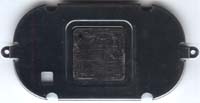
We coved the details of the Intel 845E chipset here, but in summary the northbridge of the 845E chipset is essentially the same as the northbridge of the 845 chipset except the 845E officially supports a 533MHz FSB. The northbridge maintains its predecessor's DDR266 memory support and AGP 4x controller. It's placement close to the socket allows for it to be cooled via the same fans that cool the CPU.

The system's southbridge is also located on the bottom of the NP8886's motherboard. As an 845E chipset solution, the NP8886 makes use of Intel's ICH4 southbridge solution. This gives the system ATA/100 and USB 2.0 support.

The O2Micro OZ165T is the chip that controls the CD player portion of the NP8886. It is this chip allows the NP8886 to act as a CD player while the unit is off by taking control of the CD drive. This is the same chip that the Hypersonic Sonic Aviator used to power the CD player.
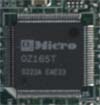
The ethernet port of the NP8886 is enabled by the Realtek RTL8100BL 10/100M fast ethernet controller with power management.
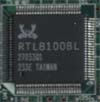
The additional logic chips on the bottom of the NP8886's motherboard include the National Semiconductor PC87393 Super I/O controller and the Winbond W83L518D I/O and smart I/O controller which enables the memory stick and SD/MMC reader.
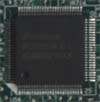
The National Semiconductor PC87393 super I/O controller.

The Winbond W83L518D smart I/O controller.
Both of these chips are located on the right side of the motherboard, as seen below.
What is missing from this picture is the TV tuner module which was removed from its home on the back middle of the motherboard. The tuner is an analogue tuner mated with a Conexant Fusion 878A PCI video decoder. For those of you out there already planning on making the Sager NP8886 into a PVR by using Windows XP Media Center Edition, think again. As we reported last week, XP Media Center Edition works properly with only a handful of desktop decoder cards and the unit used in the NP8886 is not on the list. We will see exactly how the tuner performs in the software portion of this review.
Attention also must be given to the power portion of the motherboard located on the bottom left. Using a desktop processor and components requires some serious power and the block of capacitors on the motherboard help take care of this. The power circuitry took up a good portion of the motherboard.



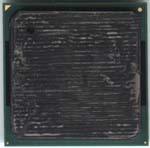

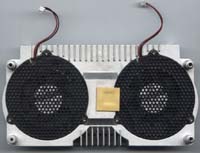
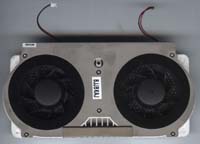

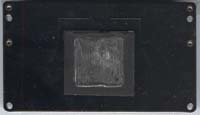
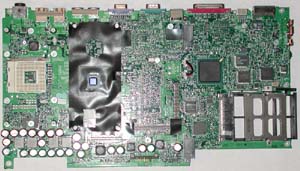









0 Comments
View All Comments